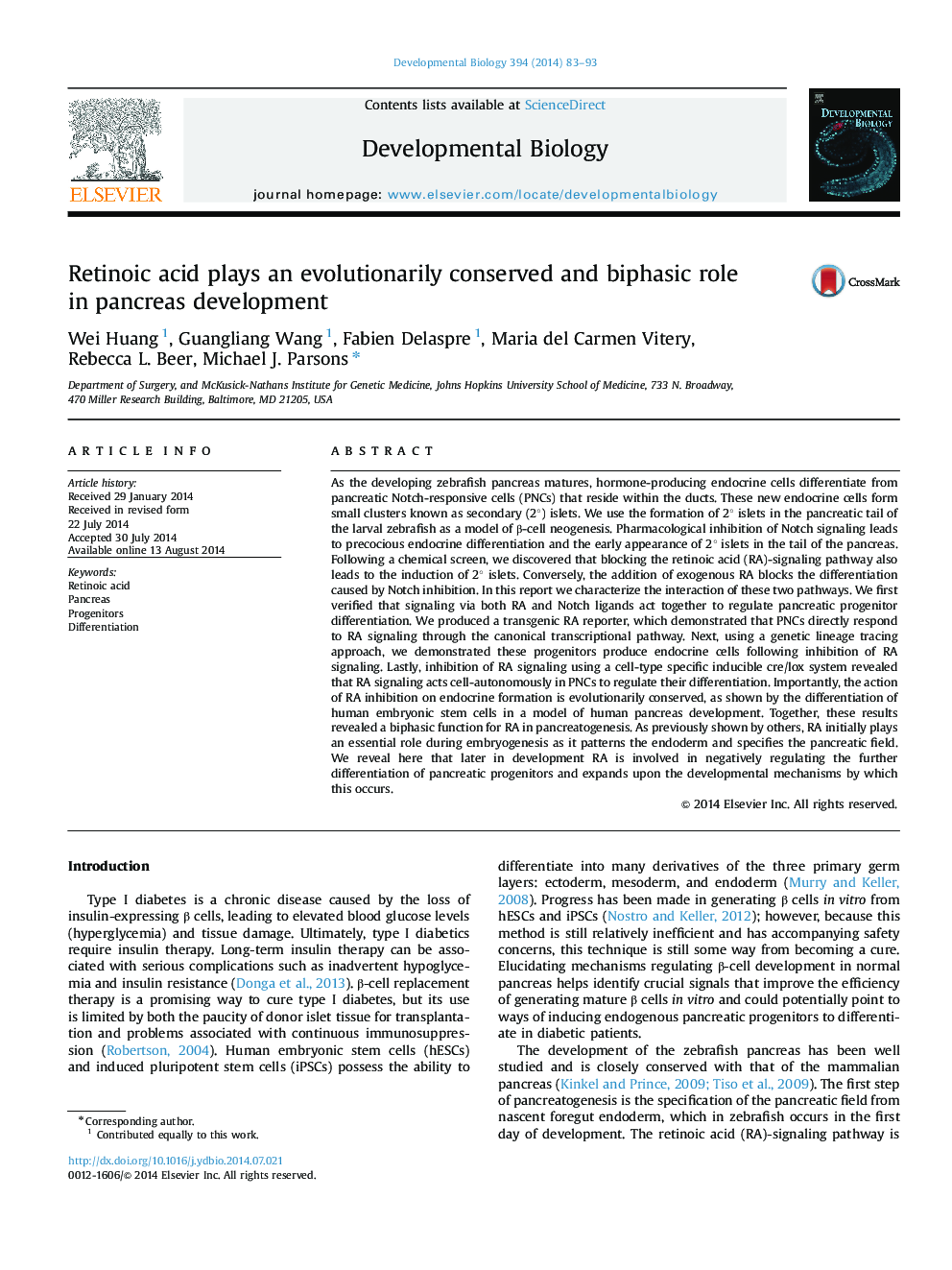| کد مقاله | کد نشریه | سال انتشار | مقاله انگلیسی | نسخه تمام متن |
|---|---|---|---|---|
| 10931614 | 1093654 | 2014 | 11 صفحه PDF | دانلود رایگان |
عنوان انگلیسی مقاله ISI
Retinoic acid plays an evolutionarily conserved and biphasic role in pancreas development
ترجمه فارسی عنوان
اسید رتینوئیک نقش تکاملی حفظ شده و دوهسته ای در توسعه پانکراس دارد
دانلود مقاله + سفارش ترجمه
دانلود مقاله ISI انگلیسی
رایگان برای ایرانیان
کلمات کلیدی
اسید رتینوئیک، پانکراس، پیشگامان، تفکیک،
موضوعات مرتبط
علوم زیستی و بیوفناوری
بیوشیمی، ژنتیک و زیست شناسی مولکولی
بیولوژی سلول
چکیده انگلیسی
As the developing zebrafish pancreas matures, hormone-producing endocrine cells differentiate from pancreatic Notch-responsive cells (PNCs) that reside within the ducts. These new endocrine cells form small clusters known as secondary (2°) islets. We use the formation of 2° islets in the pancreatic tail of the larval zebrafish as a model of β-cell neogenesis. Pharmacological inhibition of Notch signaling leads to precocious endocrine differentiation and the early appearance of 2° islets in the tail of the pancreas. Following a chemical screen, we discovered that blocking the retinoic acid (RA)-signaling pathway also leads to the induction of 2° islets. Conversely, the addition of exogenous RA blocks the differentiation caused by Notch inhibition. In this report we characterize the interaction of these two pathways. We first verified that signaling via both RA and Notch ligands act together to regulate pancreatic progenitor differentiation. We produced a transgenic RA reporter, which demonstrated that PNCs directly respond to RA signaling through the canonical transcriptional pathway. Next, using a genetic lineage tracing approach, we demonstrated these progenitors produce endocrine cells following inhibition of RA signaling. Lastly, inhibition of RA signaling using a cell-type specific inducible cre/lox system revealed that RA signaling acts cell-autonomously in PNCs to regulate their differentiation. Importantly, the action of RA inhibition on endocrine formation is evolutionarily conserved, as shown by the differentiation of human embryonic stem cells in a model of human pancreas development. Together, these results revealed a biphasic function for RA in pancreatogenesis. As previously shown by others, RA initially plays an essential role during embryogenesis as it patterns the endoderm and specifies the pancreatic field. We reveal here that later in development RA is involved in negatively regulating the further differentiation of pancreatic progenitors and expands upon the developmental mechanisms by which this occurs.
ناشر
Database: Elsevier - ScienceDirect (ساینس دایرکت)
Journal: Developmental Biology - Volume 394, Issue 1, 1 October 2014, Pages 83-93
Journal: Developmental Biology - Volume 394, Issue 1, 1 October 2014, Pages 83-93
نویسندگان
Wei Huang, Guangliang Wang, Fabien Delaspre, Maria del Carmen Vitery, Rebecca L. Beer, Michael J. Parsons,
